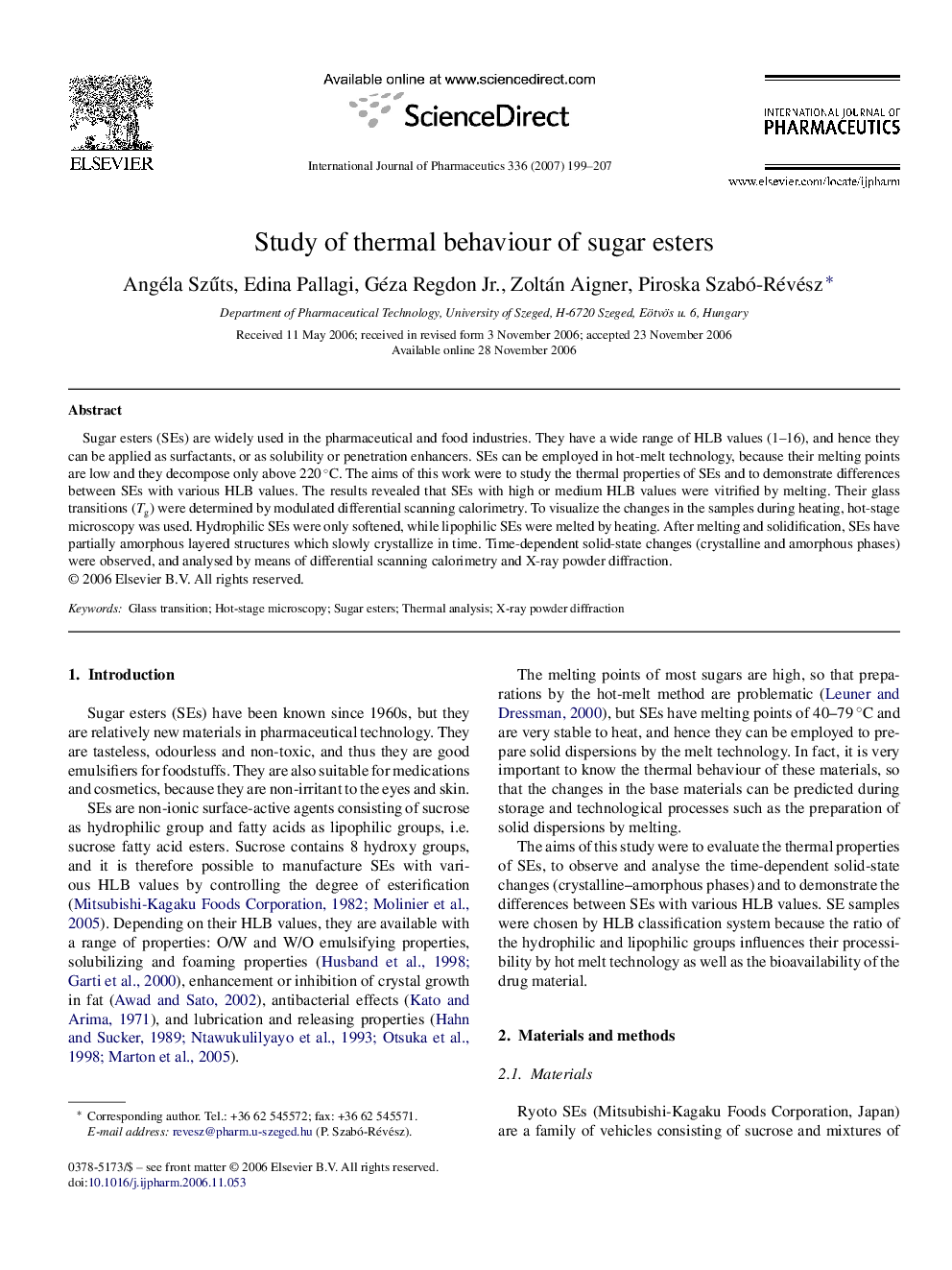| Article ID | Journal | Published Year | Pages | File Type |
|---|---|---|---|---|
| 2506116 | International Journal of Pharmaceutics | 2007 | 9 Pages |
Sugar esters (SEs) are widely used in the pharmaceutical and food industries. They have a wide range of HLB values (1–16), and hence they can be applied as surfactants, or as solubility or penetration enhancers. SEs can be employed in hot-melt technology, because their melting points are low and they decompose only above 220 °C. The aims of this work were to study the thermal properties of SEs and to demonstrate differences between SEs with various HLB values. The results revealed that SEs with high or medium HLB values were vitrified by melting. Their glass transitions (Tg) were determined by modulated differential scanning calorimetry. To visualize the changes in the samples during heating, hot-stage microscopy was used. Hydrophilic SEs were only softened, while lipophilic SEs were melted by heating. After melting and solidification, SEs have partially amorphous layered structures which slowly crystallize in time. Time-dependent solid-state changes (crystalline and amorphous phases) were observed, and analysed by means of differential scanning calorimetry and X-ray powder diffraction.
